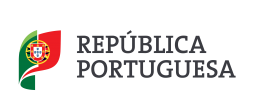16 Apr às 18:30
Auditório Ilídio Pinho
Special screening in collaboration with the It was not Cabral: reviewing silences and omissions and in antecipation of the open class of Margarida Cardoso that will take place in April the 18th, at 18:30.
The same gestures, the same places, the same hands.
The wounds and falsehoods of the colonial past are a constellation that the cinema of Margarida Cardoso, who lived in Mozambique until she was 12, has sought to inhabit.
A dwelling made of fictions (A Costa dos Murmúrios, 2004; Yvone Kane, 2014; Banzo, 2024) and documentaries (Natal 71, 1999; Kuxa Kanema, O Nascimento do Cinema, 2003; Understory, 2019; Sita: A Vida e o Tempo de Sita Valles, 2022).
But perhaps this transition is not so rigid.
Banzo seems to have drawn something from the recent journey of Understory to São Tomé and the world of cocoa trade; or A Costa dos Murmúrios and later Yvone Kane to the promised and destroyed Mozambican cinema of Kuxa Kanema.
In fact, in Understory, guided by the sweet and gentle voice of the director herself, the investigation into the historical and economic paths of cocoa plantations is just part of a personal and sensory journey, like a sad and attentive ballad, bringing cinema into the realm of listening to trees and animals, of plans that seem to involve all living beings, of mutualisms inherent in nature.
From the voiceover of Margarida Cardoso, we gather many beautiful things: there is an idea of familiarity with the African space, as if this filmic past inhabited, was the understory of Understory; her voice is the compass of a journey that is more of a flow and a fruition, where time gradually pacifies, a guide of a curiosity that transcends much of what could be the most evident in a documentary of social consciousness about the production and trade of cocoa. Margarida Cardoso does not shy away from making the ironic connection between the former slave and the modern-day slave, the new-poor-entrepreneurs-forever who harvest the cocoa but have never even approached an airport and its gift shops, where chocolate will be sold at prices unrelated to what they are paid.
She does so, I would say, ingeniously, placing side by side, in split screen as a connecting device between spaces and times, Portuguese colonial films from the late 1920s and 1930s and images of today.
History shrinks, it rhymes, then, in a degrading way.
As is heard at a certain point, the same gestures, the same places, the same hands perpetuate colonial and capitalist exploitation through other means.
But Understory seems to counter this fate with a proposal for cinema.
In this botanical tale, there is this set of indistinct and mysterious things (fictional, one might say) that Cardoso's camera intuits have as much or more importance in understanding the entire dynamic of the commercial relationship surrounding a fruit harvested in São Tomé and other defined areas of Africa and South America.
Underneath the story, there are ants in mutualistic exchanges with other creatures in search of some cocoa sugar, the cacao tree that gives hundreds of thousands of flowers and only 0.1% of fruits, but also a dog about to fall asleep, a bird pecking in the rain. It is this attentive eye to the details that allows the space and theme of the film to expand.
By extension, the viewer becomes a traveler on a journey that one wishes would never end.
An eternal, curious viewer, in fusion with the cinema and the open-mindedness, genuine and beautiful, of Understory.
Carlos Natálio (professor at the School of Arts, programmer, and critic)




